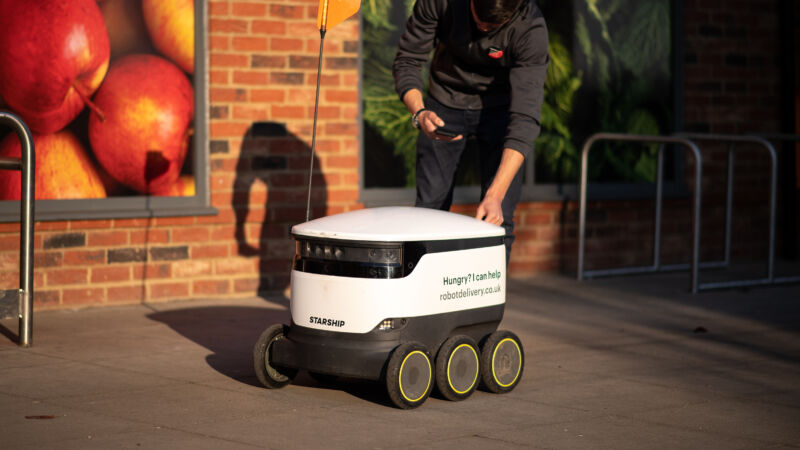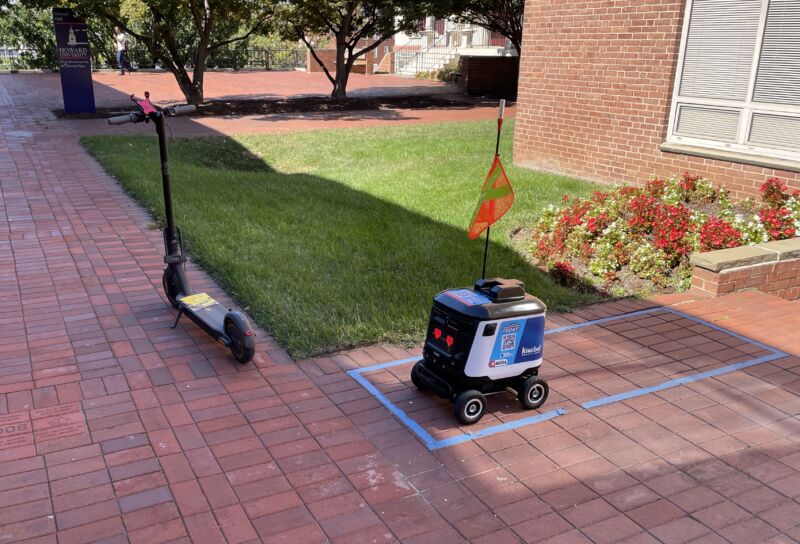-
 chevron_right
chevron_right
“Do not open robots,” warns Oregon State amid college food delivery bomb prank
news.movim.eu / ArsTechnica · Wednesday, 25 October, 2023 - 15:14 · 1 minute

Enlarge / A 2020 file photo of a Starship Technologies food delivery robot. Food is stored inside the robot's housing during transportation and opened upon delivery. (credit: Leon Neal/Getty Images )
On Tuesday, officials at Oregon State University issued a warning on social media about a bomb threat concerning Starship Technologies food delivery robots, autonomous wheeled drones that deliver food orders stored within a built-in container. By 7 pm local time, a suspect had been arrested in the prank, and officials declared there had been no bombs hidden within the robots.
"Bomb Threat in Starship food delivery robots," reads the 12:20 pm initial X post from OSU. "Do not open robots. Avoid all robots until further notice." In
follow-up posts
, OSU officials said they were "r
emotely isolating robots in a safe location" for investigation by a technician. By 3:54 pm local time, experts had cleared the robots and promised they would be "back in service" by 4 pm.
In response, Starship Technologies provided this statement to the press : "A student at Oregon State University sent a bomb threat, via social media, that involved Starship’s robots on the campus. While the student has subsequently stated this is a joke and a prank, Starship suspended the service. Safety is of the utmost importance to Starship and we are cooperating with law enforcement and the university during this investigation."

